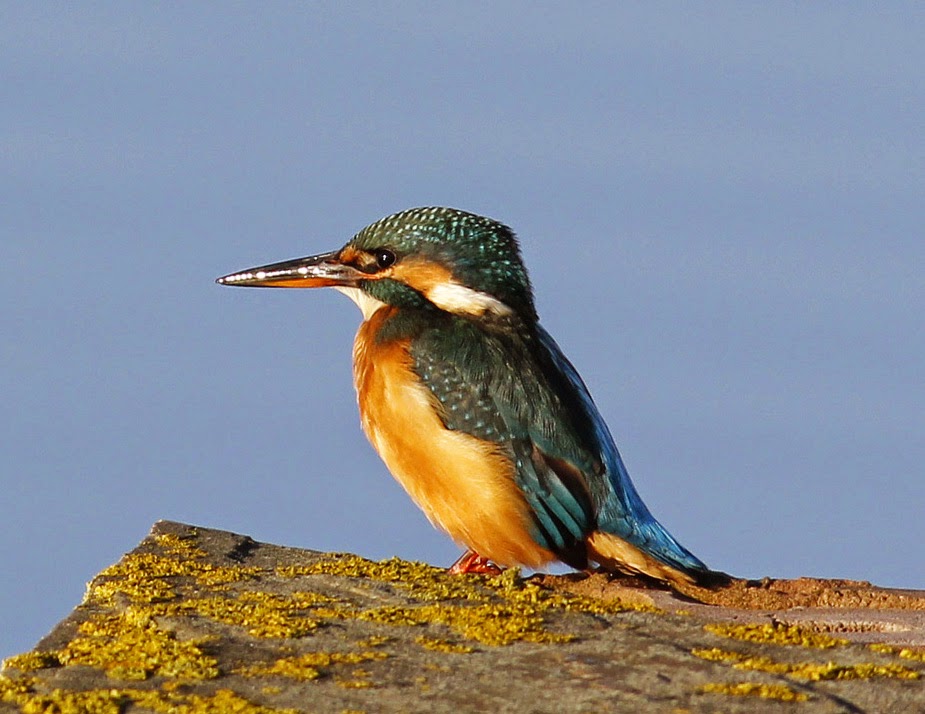First stop this morning was Pilling and a check of the Little Egret roost from the quiet of the car where I counted 33 birds scattered through the tall trees. Leaving the car can cause the egrets to fly off prematurely as I’ve discovered when even in the half light of dawn doggie walkers are first to the car park where the slamming of their car doors and general noise makes the egrets head off for the day ahead.
Just this week a lady telephoned to relate the story of how at Knott End two out of control dogs, a Jack Russell and a Springer type, grabbed hold of an unwary Little Egret feeding on the marsh and proceeded to tear the poor bird into two pieces. Result - one less Little Egret to grace our shores plus two hysterical and traumatised girls aged nine and eleven who had been walking the dogs without adult supervision.
Little Egret
To more cheerful matters.
A Kingfisher was on duty at its regular spot when I arrived at Conder Green. After ten or fifteen minutes there’d been little happening apart from the click of the camera and the Kingfisher peering into the water below, and then when the thing did eventually dive for a fish it surfaced with nothing and flew off to the right, out of sight. Out of the breeding season Kingfishers do spend a lot of their time just sitting around, watching and waiting, and that is why they can be relatively difficult to connect with.
As usual there are a few heavily cropped photographs because there is no closer point at which the Kingfisher can sit. Nevertheless it is great to regularly watch this wondrous bird for many minutes at a time rather than the fleeting glimpses which many folk get.
Kingfisher
Kingfisher
I told a lie as action was actually ongoing throughout the Kingfisher episode in the form of Common Terns on the island, the two well grown young being constantly tended by the two adults, the adults breaking off to noisily inspect or chastise anything which looked a possible danger, including me some 75/100 yards away.
There are the usual waders and wildfowl to relate - 1 Snipe, 1 Spotted Redshank, 1 Greenshank, 5 Common Sandpiper, 4 Curlew, 55 Lapwing and 40ish Redshank. Also, 15 Teal, 6 Little Grebe, 1 Great Crested Grebe, 1 Little Egret, 1 Grey Heron, 1 Grey Wagtail and 12+ Alba wagtail.
Curlew
There seemed to be more going on at Glasson Dock where around the car park, along the towpath and around the boats were 50+ Alba wags and 2 Grey Wagtails. The wagtails were very active with so many concentrated in such a small area that they had most likely vacated a roost, possibly in the bushes near the bowling green or in the area of the dock buildings.
There seemed to be birds everywhere as a flock of 60+ Goldfinch and 30+House Sparrows joined in the confusion by flying between feeding spots in the car park, the bowling green trees and on the adjacent marsh.
Pied Wagtail
I left the wagtails, finches and the sparrows to sort themselves out and instead concentrated on the yacht basin where once again there was a good gathering of mainly Swallows plus a smaller number of House Martins, about 300 birds in all. The Tufted Duck appear to have increased in numbers, possibly the Coot too with respective counts of 26 and 28.
Coot
Tufted Duck
Glasson Dock
A walk along the towpath revealed more Swallows feeding over the canal, 1 Great-spotted Woodpecker, 3 Reed Warbler, 2 Reed Bunting, several Tree Sparrows and a Chiffchaff. On the return walk the chiffy was in full, almost-September song.
The sun was a good way up, the air became warm and Joe Bloggs surfaced - time to go home.





















































.jpeg)












.jpg)












